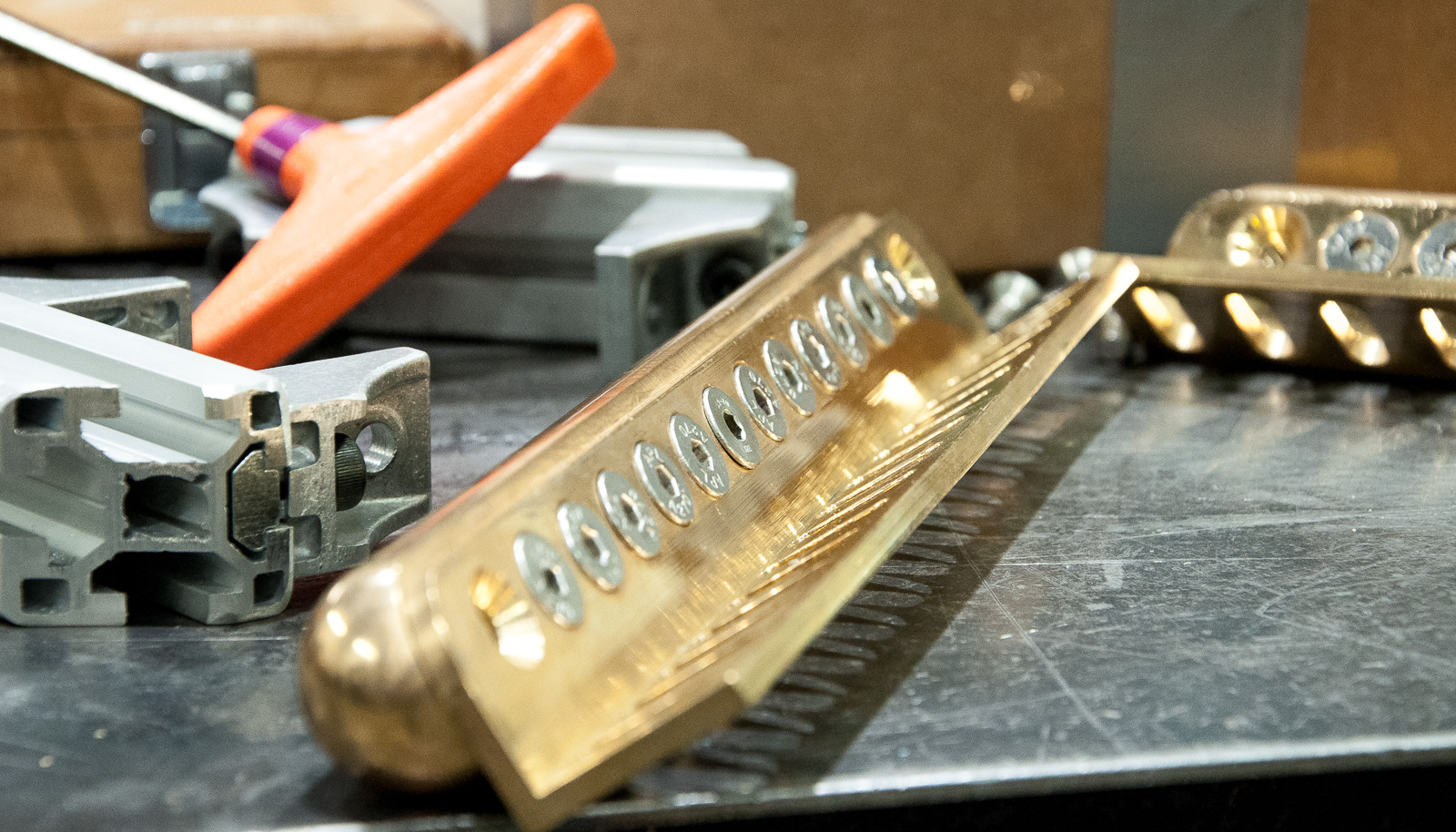By Michael Delage – Chief Technology Officer at General Fusion
General Fusion’s Founder, Dr. Michel Laberge, can often be heard remarking that “Fusion and plasma physics research sounds exotic and exciting, but a lot of it still boils down to plumbing and wiring.”
It’s perhaps a simple way of pointing out that the pursuit of fusion energy is a thoroughly multi-disciplinary endeavour, and that there are more than a few challenging technologies that underpin any fusion research program, before you can get to the cutting-edge physics. Some examples:
- Plasma injectors require pulsed power supply systems. At General Fusion, this means banks built of very large energy storage capacitors that can deliver short (100 microsecond) pulses of electricity. Precisely and reliably switching 1,000,000 amps at 20,000 volts is not trivial (that’s 20 gigawatts; eat your heart out Marty McFly and Doc Brown). The plasma injectors themselves must be able to handle those large electric currents, so engineers must master designs for joints in high vacuum systems that don’t cause “arcing and sparking” that damages the injector.
- Plasma diagnostics are not off-the-shelf, either. How do you measure the temperature of a 5,000,000 °C plasma? Not with a mercury thermometer… Plasma diagnostics, measuring magnetic fields, density, temperature, composition (visible and UV spectroscopy), all take careful design, development, calibration, and maintenance.
- Liquid metal systems have their own challenges too, in materials, pumping, sensing… if you have a catalog for pressure sensors capable of measuring pulses up to 1,000 atmospheres in 400 °C molten lead, let us know.
Right. Can we do some plasma physics now?
The thing is, all of these areas have inspired innovation at General Fusion. General Fusion engineers, physicists, and technicians have come up with creative new designs in order to solve problems and move quickly. Examples include: taking advantage of telecom optical technologies for scalable, lower cost diagnostics and data acquisition systems; developing high precision puff valves for the gas that goes into our plasma injectors; designing inexpensive cables with easily modified impedance for pulsed power supplies; even creating omni-directional lithium evaporators for coating the inside surfaces of plasma injectors.
It’s all of these inventions, though, that make advances in fusion possible.
When visitors tour our labs they sometimes ask about these technologies, and whether we spin them off. To be candid, it’s a debate we’ve had internally on a somewhat regular basis, because we can see the opportunities too. But there’s a pretty big gap between the engineered prototypes we use and continuously evolve, and a fully productized, commercial technology. There’s also a whole business infrastructure that commercialization would require, and both maturing the technology and developing the business opportunity would take significant investment; investment we’d simply rather put into the lab. We’re impatient, and our focus is making fusion energy a reality!
A conversation I had a while ago with a former executive from a multinational energy company highlighted how this is a key difference between smaller, focused companies like General Fusion and multinationals. In his experience, a multinational could build the business case for pursuing a technology like fusion energy in large part based on the anticipated spin-off technologies that would emerge during development. Why doesn’t that work for entrepreneurial companies too? The big difference, of course, is that a multinational already has many different commercial divisions ready to accept inventions and develop them into commercial products; they have the supply chains, sales channels, customers, and business infrastructure in place. The advantage entrepreneurial companies have is focus, efficiency, and agility; and that translates to speed.
That doesn’t mean we won’t be revisiting the question of commercializing spin-offs from time to time. Fusion is a huge challenge, and pushing the science and technology forward takes a team with a diversity of skills and expertise, scientific infrastructure, and a lot of creativity; we need to keep the inventions coming.
And that’s because success in fusion won’t be the result of a single eureka moment, or one brilliant new technology. What we see as breakthroughs are really a culmination of many years of invention, in “plumbing and wiring” as much as in physics.
In other words, breakthroughs are a culmination of all the little things that made one big idea a reality.

